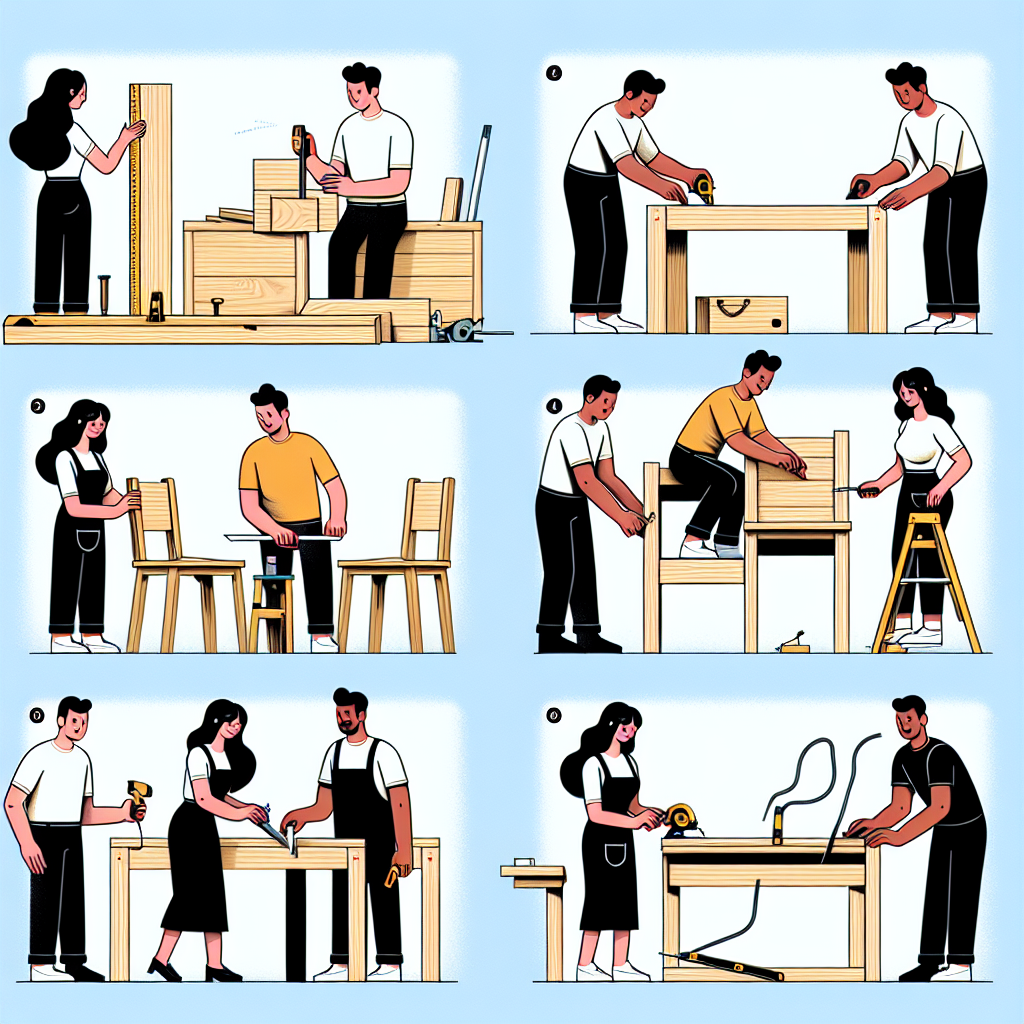
How to make furniture
Mastering the Art of Furniture Making
Creating your own furniture is a rewarding experience that allows you to inject your personal style into your living space. Whether you’re looking to furnish a new home or simply want to craft custom pieces to replace or enhance your current decor, learning how to make furniture can be an enjoyable and educational journey. In this guide, we’ll explore the basics of furniture making, various techniques, essential tools, and step-by-step instructions for creating some popular pieces.
The Benefits of Making Your Own Furniture
Before diving into the “how to” aspects, let’s discuss why making your own furniture is worth considering:
- Customization: You can create furniture that fits your specific needs, tastes, and space constraints.
- Quality control: Building your own pieces allows for greater attention to detail and selection of high-quality materials.
- Cost-effectiveness: While some projects can be costly, DIY furniture often saves money compared to buying premade alternatives.
- Satisfaction: There’s a unique sense of accomplishment that comes from creating something with your hands.
Essential Tools and Materials
Before embarking on your furniture-making journey, you’ll need to gather the necessary tools and materials. Here’s a basic list to get you started:
- Measuring tape
- Square
- Chisels
- Saw (hand saw or powered saw)
- Drill and drill bits
- Screwdriver
- Sander
- Clamps
- Wood glue
- Finish (stain, paint, or varnish)
When it comes to materials, wood is the most common choice. You can opt for hardwoods like oak, walnut, or maple, or softer woods like pine or cedar depending on your project and budget. Plywood and MDF (medium-density fiberboard) are also popular for certain applications.
Planning Your Project
Every successful furniture piece begins with a solid plan. Here’s how to create an effective project plan:
- Define your goals: Consider what type of furniture you want to make and its intended purpose.
- Sketch a design: Draw rough sketches of your furniture piece to visualize the final product.
- Measurements: Take accurate measurements of the space the furniture will occupy to ensure a proper fit.
- Bill of materials: List all materials and quantities needed to complete your project.
"A problem well-stated is a problem half-solved." - Charles Kettering
Step-by-Step Guide to Making a Basic Table
Now that you have an understanding of the planning and tools involves, let’s walk through a specific project: building a simple wooden table. This project will illustrate core techniques that you can apply to more complex pieces later on.
Step 1: Gather Your Materials and Tools
For this table, you’ll need:
- Four legs (2x4 or 4x4 lumber)
- A tabletop (that matches your desired dimensions)
- Supports (2x4 lumber for the apron and other structural supports)
- Wood screws
- Wood glue (optional for added stability)
Step 2: Cut the Wood
Measure and cut your wood pieces according to your design. Typically, the legs should be of equal length for stability, and the tabletop should leave some overhang on the sides. Remember to use a square to ensure your cuts are straight.
Step 3: Assemble the Frame
Start by creating the table frame:
- Attach the apron pieces (the horizontal support beams) between the legs at the top and bottom. Use wood screws for a strong connection.
- Clamp your pieces together while the glue dries, if you choose to use any.
Step 4: Secure the Tabletop
Once your frame is sturdy, you can attach the tabletop:
- Position the tabletop on top of the frame.
- Secure it using wood screws through the tabletop into the frame below.
Step 5: Finishing Touches
Once your table is assembled, it’s time to sand down any rough edges and add your desired finish:
- Sand the entire table with progressively finer grit sandpaper until it’s smooth.
- Apply a stain, paint, or sealant to protect the wood and enhance its appearance.
Maintenance Tips for Your Handmade Furniture
To ensure your handmade furniture lasts, consider the following maintenance tips:
- Keep your furniture clean by dusting regularly.
- Use coasters to prevent water rings on surfaces.
- Avoid direct sunlight which can fade your finish over time.
- Reapply durable finishes as necessary to protect the wood.
Expanding Your Skills: Next Steps
Now that you have a basic understanding of how to make furniture with a simple table project, consider exploring more complex projects:
- Bookshelves
- Coffee tables
- Benches
- Chairs
- Desks
Each project can expand your skill set, introducing you to new techniques and tools. Consider investing time in workshops or online tutorials that offer valuable guidance and inspiration.
Conclusion
Learning how to create furniture from scratch is an incredible skill that not only beautifies your home but also brings fulfillment in crafting something truly unique. With the right tools, careful planning, and a willingness to learn, you can create stunning pieces that reflect your personal style and last for generations. Whether you're a novice or looking to expand your skills, the journey into furniture making can be both enjoyable and rewarding.
By Guest, Published on August 11th, 2024